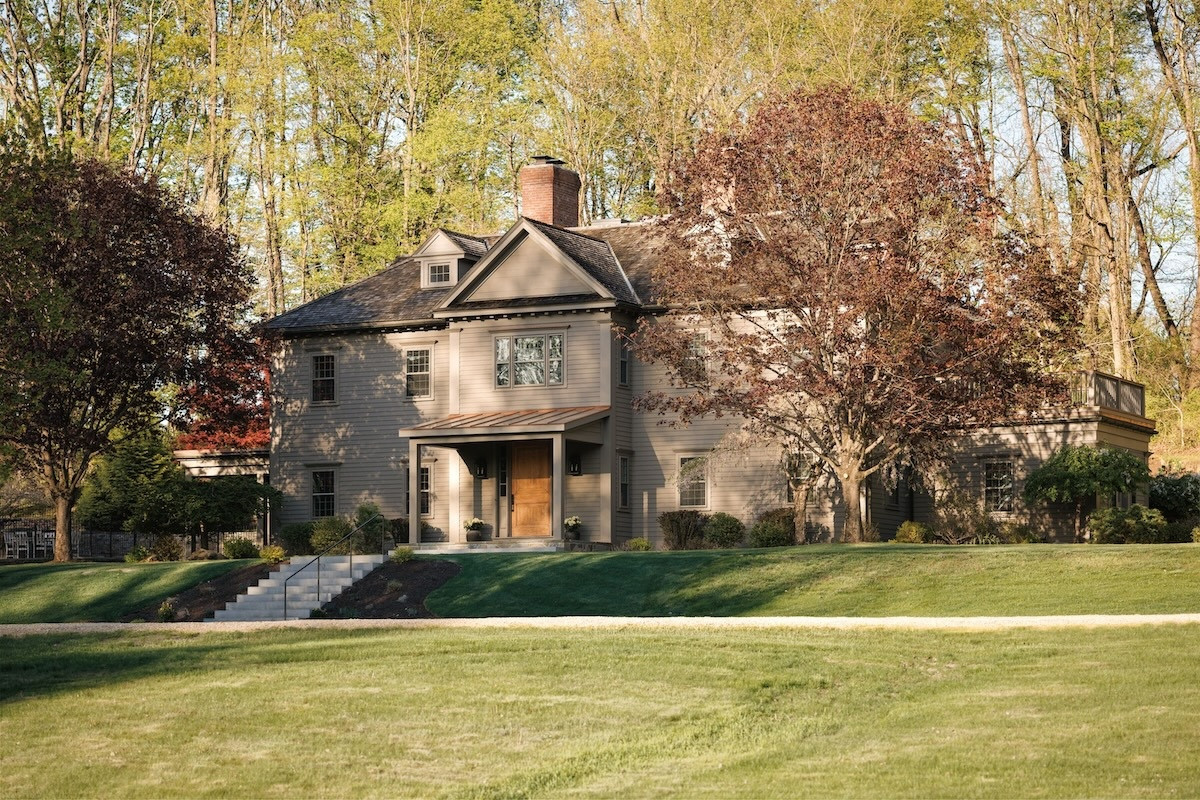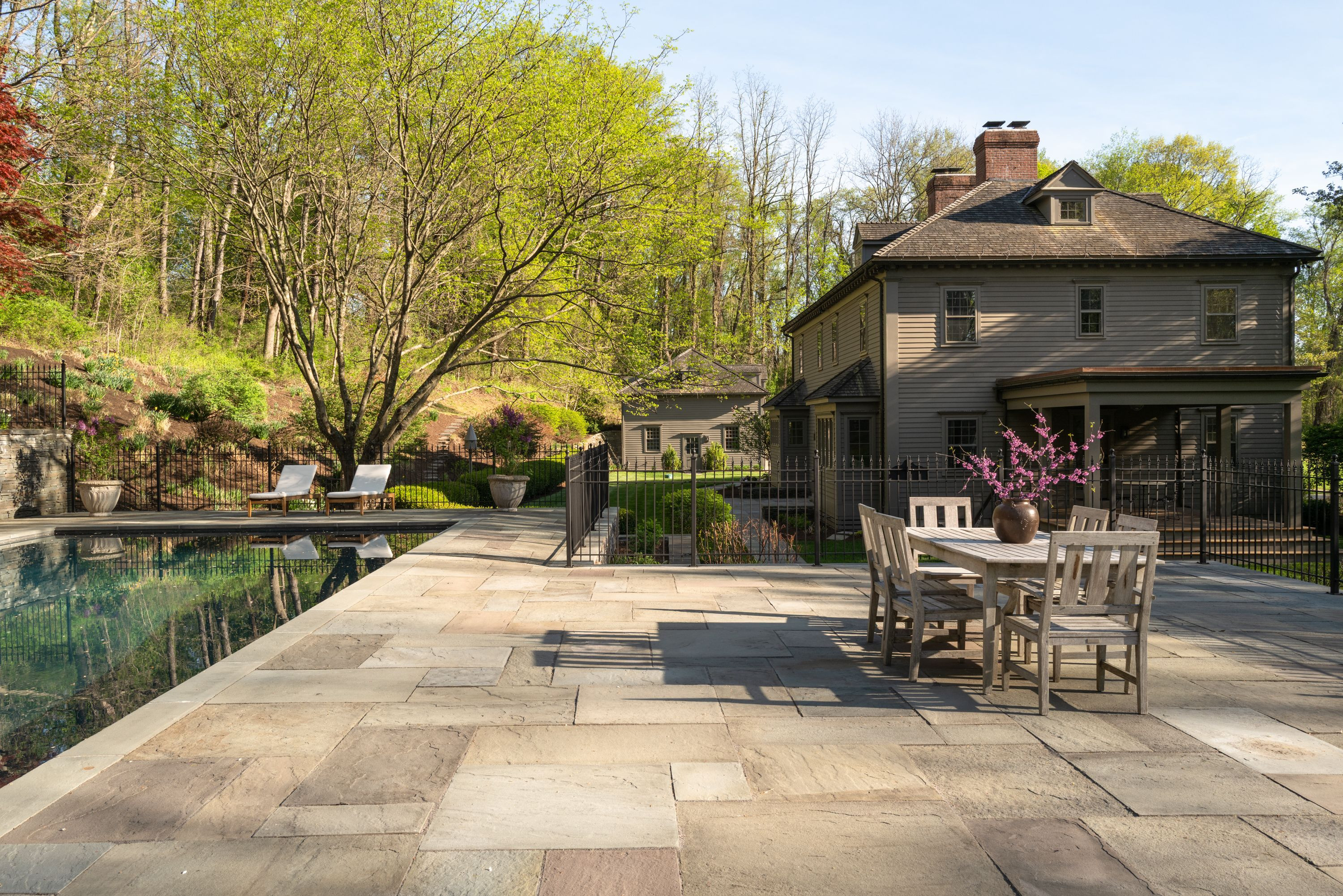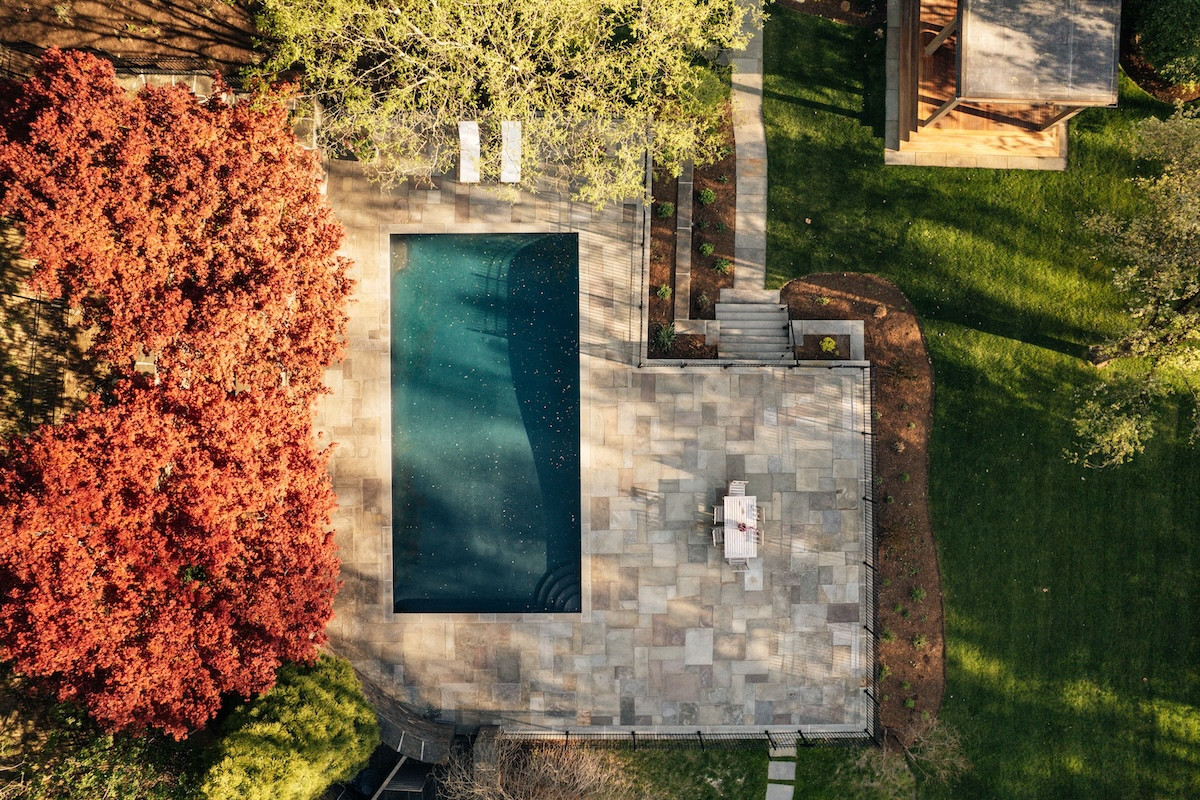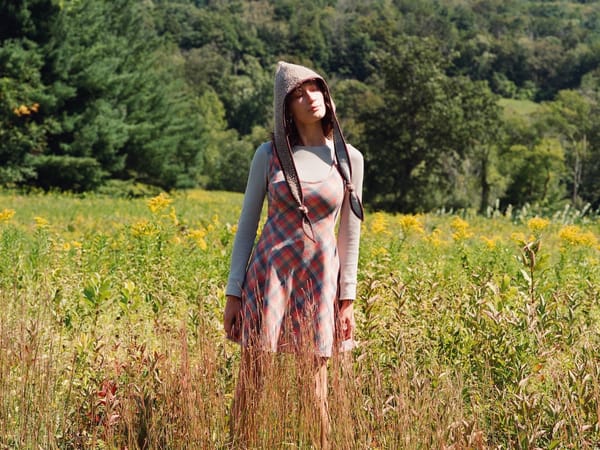Turning a `90s McMansion into an Understated Design Triumph
Real Estate and design firm Upstate Down transformed the bland property into a showpiece of contemporary styling.

Real Estate and design firm Upstate Down transformed the bland property into a showpiece of contemporary styling.

The Mill House.
- Photos provided by Upstate Down.When Delyse Berry first walked into the 1990s-era Colonial now known as the “Mill House,” she saw a dwelling with scale and infrastructure but little architectural interest. “It really lacked a sense of spirit and soul,” she says. “But yet, it had scale.”
Berry, co-founder of the Rhinebeck-based real estate and design firm Upstate Down, led a full interior overhaul of the property, which now reflects a dramatically different sensibility. The home’s traditional trim and moldings were stripped away; Venetian plaster walls replaced dated colors; and thick, curved archways were introduced to unify rooms and soften transitions.

Photos provided by Upstate Down.
The full scale redesign of the three-story home (for sale for $4.75 million) came together unusually quickly—within eight months—thanks in part to the project's structure. Berry’s contractor also happens to be the owner of the house and dedicated full resources to the renovation. “Being able to renovate while being in the creative process allowed for a very, very short timeline,” she says.
Eight months might not seem like a short timeline to some but the project overhauled every inch of the 6,000-square-foot main house (four-bedroom, four-and-a-half-bath) and the 1,000-square-foot guest house above the three-car garage.
With all that is going on inside and across the 10-acre property, without a doubt the most striking element Berry employed is one of the most gentile—the Venetian plaster walls throughout the main living spaces. “It’s subtle and understated, but also a big statement,” Berry says. “Somebody went in and did all that by hand. You feel that intention in the space.” She describes the way natural light interacts with the plaster as central to how the rooms now feel—mid-tones deepening in shadow, brighter walls catching sunlight and reflecting movement.

Berry also reimagined the home’s interior architecture, replacing what she describes as “short hallways and spindled railings” with wider sightlines and new archways. The curve motif appears throughout the home, from the stairwell and fireplace surrounds to the primary bath’s rounded tub and shower enclosure. “We actually eliminated a lot of the moldings throughout the house,” Berry says. “It was all in an attempt to really simplify your point of view and then draw your attention to things that really evoked emotion, feeling, and intention.”
Material selection was similarly pared down. Berry opted for finishes that patina naturally over time: real wood floors, aged marble, antique tile, and unlacquered metals. “One of the things about newly manufactured materials is they tend to be very uniform,” she says. “I’m a strong believer in having things that show their wear. That gives a space character and a sense of longevity.”
Some of the more complex changes involved layout revisions. The original primary bathroom was narrow and oddly accessed through a diagonally connected oversized closet. The reworked configuration is more functional and aligns with the overall material language of the house. “We had to really problem-solve with that one,” she says. “It’s super functional now, and it feels inviting.”
The kitchen and entryway were also redesigned. “The kitchen was too small and dense in one spot,” Berry says. “We had to open up doorways and take down the halls to maximize it.”
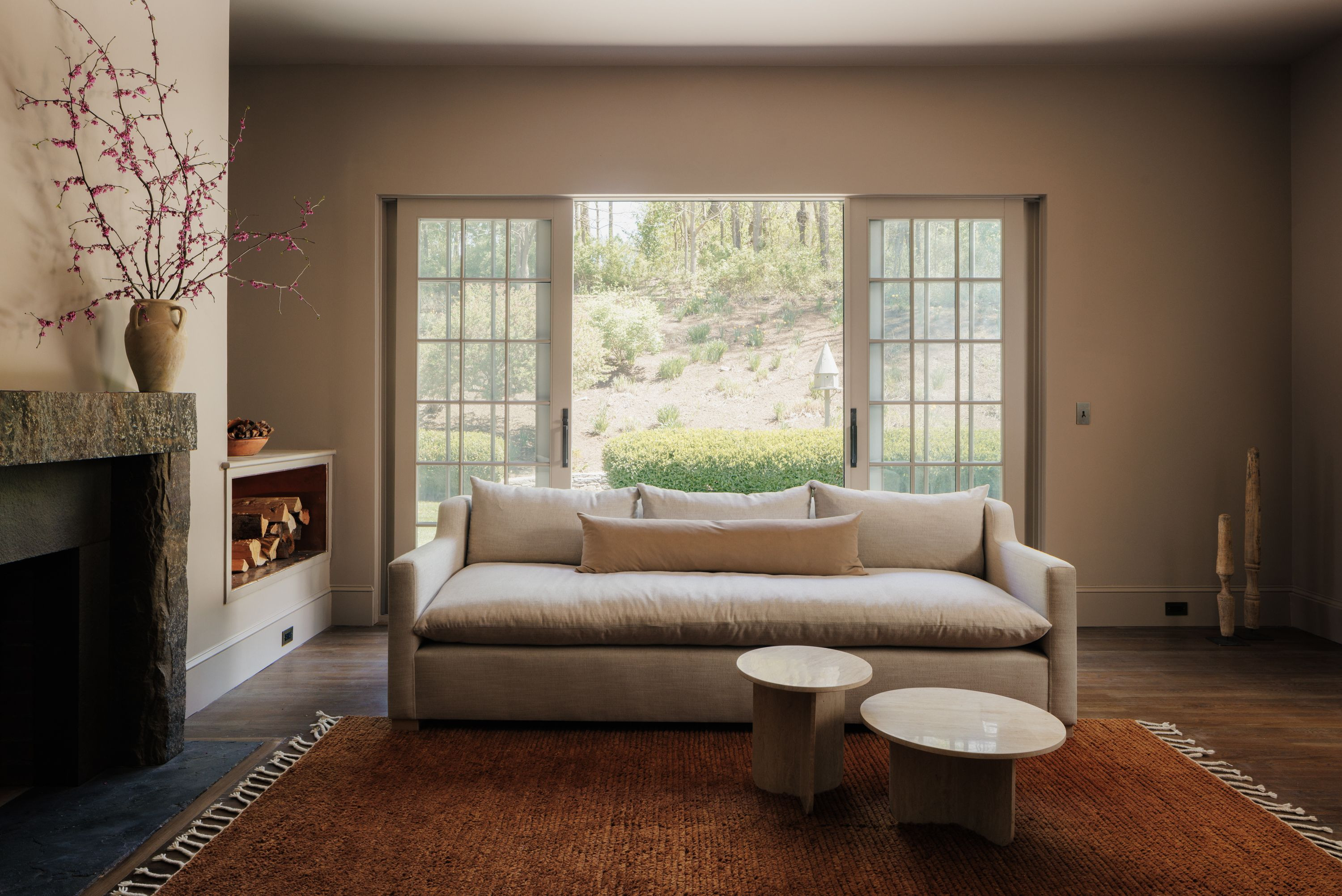
The renovation was completed while Upstate Down was already at capacity with other work. Berry, who runs the business with her husband, Jon Berry, handled the project largely on her own time, calling it a “passion project at night.” The firm’s portfolio includes many vintage homes and modern builds, but this project gave Berry the opportunity to apply her design perspective to a bland house with solid bones. “We’ve done a lot of kitchens, bathrooms, whole-house renovations—but doing a 6,000-square-foot main and guest house in such a short period of time was a new scale challenge,” she says.
Berry says this 1991 home posed a different kind of opportunity. “A lot of people don’t think of homes from that era as being particularly inspiring,” she says. “But you can make a house feel soulful, no matter what time it’s from.”
